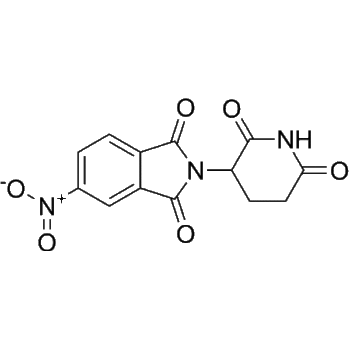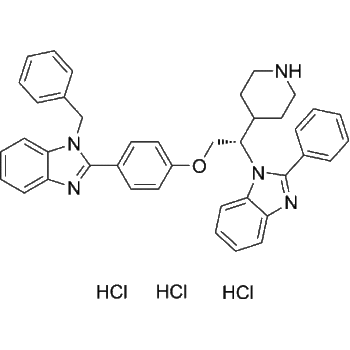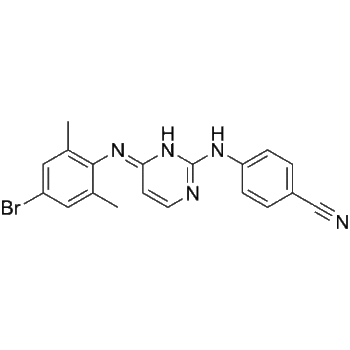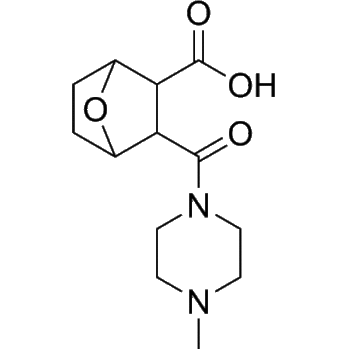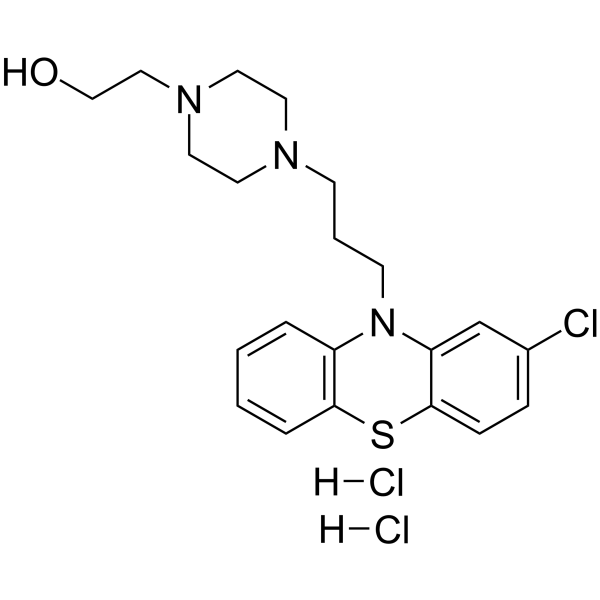
Download Files:
Perphenazine (dihydrochloride)
Products Details
Product Description
– Perphenazine dihydrochloride is an orally active dopamine receptor and histamine-1 receptor antagonist, with Ki values of 0.56 nM (D2), 0.43 nM (D3), 6 nM (5-HT2A), respectively. Perphenazine dihydrochloride also binds to Alpha-1A adrenergic receptor. Perphenazine dihydrochloride inhibits cancer cell proliferation, and induces apoptosis. Perphenazine dihydrochloride can be used in the research of mental disease, cancer, inflammation[1][3][5].
Web ID
– HY-A0077A
Shipping
– Room temperature
Applications
– COVID-19-immunoregulation
Molecular Formula
– C21H28Cl3N3OS
References
– [1]Richtand NM, et al. Dopamine and serotonin receptor binding and antipsychotic efficacy. Neuropsychopharmacology. 2007 Aug;32(8):1715-26. |[2]Lei Tao, et al. Lysosomal membrane permeabilization mediated apoptosis involve in perphenazine-induced hepatotoxicity in vitro and in vivo. Toxicol Lett. 2022 Jul 29;367:76-87. |[3]Min-Jeong Heo, et al. Perphenazine Attenuates the Pro-Inflammatory Responses in Mouse Models of Th2-Type Allergic Dermatitis. Int J Mol Sci. 2020 May 3;21(9):3241. |[4]Michał Otręba, et al. Perphenazine and prochlorperazine decrease glioblastoma U-87 MG cell migration and invasion: Analysis of the ABCB1 and ABCG2 transporters, E-cadherin, α-tubulin and integrins (α3, α5, and β1) levels. Oncol Lett. 2022 Jun;23(6):182. |[5]Michał Otręba, et al. n vitro anticancer activity of fluphenazine, perphenazine and prochlorperazine. A review. J Appl Toxicol. 2021 Jan;41(1):82-94.
CAS Number
– 2015-28-3
Molecular Weight
– 476.89
SMILES
– OCCN1CCN(CCCN2C3=C(C=CC=C3)SC4=CC=C(Cl)C=C24)CC1.[H]Cl.[H]Cl
Clinical Information
– Launched
Research Area
– Cancer; Endocrinology; Inflammation/Immunology; Neurological Disease
Solubility
– 10 mM in DMSO
Target
– 5-HT Receptor;Adrenergic Receptor;Apoptosis;Autophagy;Dopamine Receptor;Histamine Receptor
Isoform
– 5-HT1 Receptor;5-HT2 Receptor;5-HT6 Receptor;5-HT7 Receptor;D2 Receptor;D3 Receptor;D4 Receptor
Pathway
– Apoptosis;Autophagy;GPCR/G Protein;Immunology/Inflammation;Neuronal Signaling
Product type
– Reference compound
Disclaimer: All products are for Research use only unless clearly stated otherwise on the product datasheet. Datasheets provided on the website are drafts for reference purpose only and you are requested to always refer to the hard copy included in the kit for your experimentation. Agdia Products are available for delivery only in Canada.
